|
产品型号
|
JFTSM-SFP-0155-13-2/15/40/80-LCD
|
工厂品牌
|
JFOPT
|
|
封装形式
|
SFP
|
光口类型
|
Duplex LC
|
|
最高总速率
|
≤ 155Mbps
|
每通道速率
|
-
|
|
最大传输距离
|
2KM 15KM 40KM 80KM
|
||
|
工作波长
|
1310nm
|
工作电压
|
3.3V
|
|
光纤型号
|
SMF
|
纤芯尺寸
|
90/125
|
|
发射器类型
|
FP
|
接收器类型
|
IDP
|
|
发射功率
|
-15~-8dbm
|
接收灵敏度
|
2KM -23dBm
15/40/80KM -28dBm
|
|
数字诊断
|
YES
|
接收过载
|
-8dBm
|
|
功耗
|
<1W
|
支持协议
|
SFP MSA SFF-8472
|
|
工作温度(商业级)
|
0℃~+70℃
|
储存温度(商业级)
|
-40℃~+85℃
|
|
工作温度(工业级)
|
-40℃~+85℃
|
储存温度(工业级)
|
-40℃~+85℃
|
JFOPT嘉富持续投入光模块生产领域,产品覆盖1*9、SFP、10G、25G、100G、200G、400G、800G GPON/EPON/XG/XGSPON OLT等全系列光模块。同时为下游同行提供TOSA、ROSA、BOSA等光器件半成品解决方案。JFOPT嘉富生产线具备日产量一万只光模块、两万只光器件的能力。此外,JFOPT嘉富光模块拥有业界领先的耐高温、抗干扰特性,广泛应用于计算中心、运营商、交通安防、电力设施等行业领域。
JFOPT SFP 155M 1310nm 2/15/40/80km LC DX光模块系列是一种小型可插拔模块,适用于快速以太网和OC-3/STM-1 SDH/SONET等双工光数据通信。该模块采用SFP 20-pin连接器,支持热插拔功能。其设计专为单模光纤优化,工作波长为1310nm。发射部分采用多量子阱1310nm激光器,符合国际安全标准IEC 60825规定的1类激光安全等级。接收部分集成砷化镓(GaAs)探测器前置放大器(IDP),安装于光学接口组件中,并配备限幅后置放大器集成电路。SFP 155M 1310nm 2/15/40/80km LC DX光收发器系列严格遵循SFF-8472 SFP多源协议(MSA)规范。
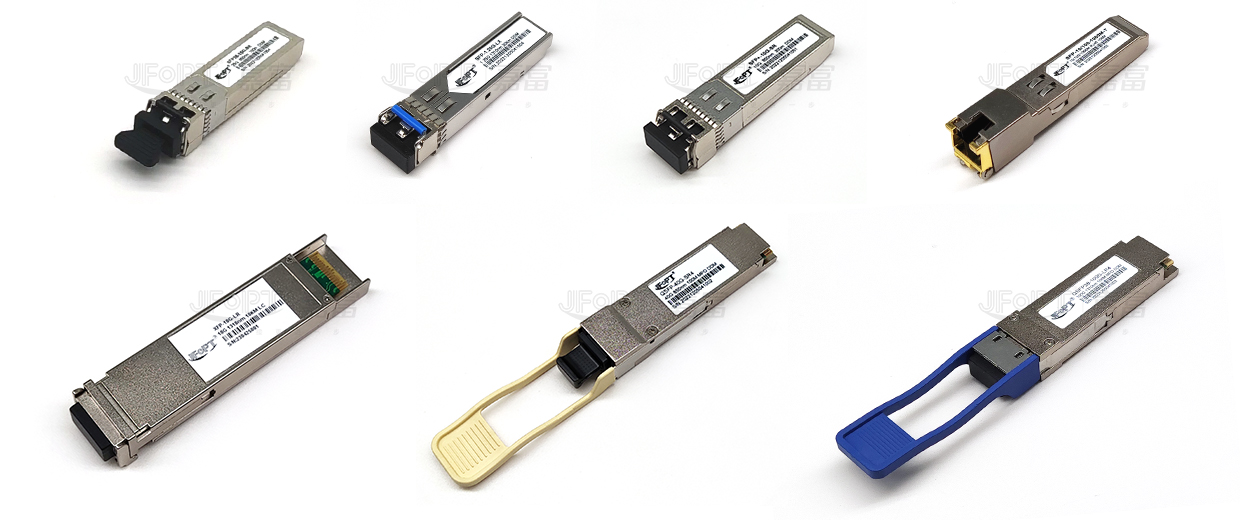

| Operating data rate up to 155Mbps | 2km/15km/40km/80km with 9/125 µm SMF | ||||||||
| Single 3.3V power supply and TTL logic interface | Hot-Pluggable SFP footprint duplex LC connector interface |
| Fast Ethernet |
OC-3 IR-1 / STM-1 (S-1.1)
|
||||||||
| ATM Switches and Routers | Other optical links |

| Parameter | Symbol | Min. | Max. | Unit | ||||
| Storage Temperature | TS | -40 | +85 | °C | ||||
| Supply Voltage | VCC | -0.5 | 3.6 | V | ||||
| Operating Relative Humidity | - | - | 95 | % | ||||
*Exceeding any one of these values may destroy the device immediately. |
||||||||
| Parameter | Symbol | Min. | Typical | Max. | Unit | |||
| Operating Case Temperature | Tc | JFTSM-SFP-0155-13-2/15/40/80-LCD | 0 | - | +70 | °C | ||
| -40 | - | +85 | ||||||
| Power Supply Voltage | Vcc | 3.15 | 3.3 | 3.45 | V | |||
| Power Supply Current | Icc | - | - | 300 | mA | |||
| Date Rate | OC-3/STM- 1 | - | - | 155 | - | Mbps | ||
| FE | - | - | 100 | - | ||||
| Parameter | Symbol | Min. | Typ. | Max | Unit | Notes | ||
Transmitter |
||||||||
| LVPECL Inputs(Differential) |
Vin | 400 | - | 2000 | mVpp | AC coupled inputs |
||
| Input Impedance (Differential) |
Zin | 85 | 100 | 115 | ohms | Rin > 100 kohms @ DC |
||
| TX_Dis | Disable | - | 2 | - | Vcc | V | - | |
| Enable | - | 0 | - | 0.8 | - | |||
| TX_FAULT | Fault | - | 2 | - | Vcc+0.3 | V | - | |
| Normal | - | 0 | - | 0.5 | - | |||
Receiver |
||||||||
| LVPECL Outputs | Vout | 400 | - | 2000 | mVpp | AC coupled | ||
| (Differential) | - | - | - | - | - | outputs | ||
| Output Impedance (Differential) |
Zout | 85 | 100 | 115 | ohms | - | ||
| RX_LOS | LOS | - | 2 | - | Vcc+0.3 | V | - | |
| Normal | - | 0 | - | 0.8 | V | - | ||
| MOD_DEF ( 0:2 ) | VoH | 2.5 | - | - | V | With Serial ID | ||
| VoL | 0 | - | 0.5 | V | ||||
| Parameter | Symbol | Unit |
(1310nm FP and PIN, 2km)
|
(1310nm FP and PIN, 15km) | (1310nm FP and PIN, 40km) |
(1310nm DFB and PIN, 80km)
|
|||||||||
|
Min.
|
Typical | Max. | Min. | Typical | Max. | Min. | Typical | Max. |
Min.
|
Typical | Max. | ||||
| 9µm Core Diameter SMF | L | km | - | 2 | - | - | 15 | - | - | 40 | - | - | 80 | - | |
| Data Rate | - | Mbps | - | 100/155 | - | - | 100/155 | - | - | 100/155 | - | - | 100/155 | - | |
Transmitter |
|||||||||||||||
| Center Wavelength | λC | nm | 1260 | 1310 | 1360 | 1260 | 1310 | 1360 | 1260 | 1310 | 1360 | 1260 | 1310 | 1360 | |
| Spectral Width (RMS) | ∆λ | nm | - | - | 4 | - | - | 4 | - | - | 3 | - | - | 1 | |
| Side Mode Suppression Ratio | SMSR | dB | - | - | - | - | - | - | - | - | - | 30 | - | - | |
| Average Output Power | Pout | dBm | -15 | - | -8 | -15 | - | -8 | -5 | - | 0 | 0 | - | 5 | |
| Extinction Ratio | ER | dB | 8.2 | - | - | 8.2 | - | - | 10 | - | - | 10 | - | - | |
| Rise/Fall Time(20%~80%) | tr/tf | ns | - | - | 2 | - | - | 2 | - | - | 2 | - | - | 2 | |
| Output Optical Eye | IUT-T G.957 Compliant | ||||||||||||||
| TX_Disable Assert Time | t_off | us | - | - | 10 | - | - | 10 | - | - | 10 | - | - | 10 | |
Receiver |
|||||||||||||||
| Center Wavelength | λC | nm | 1260 | - | 1600 | 1260 | - | 1600 | 1260 | - | 1600 | 1260 | - | 1600 | |
| Receiver Sensitivity | Pmin | dBm | - | - | -23 | - | - | -28 | - | - | -34 | - | - | -34 | |
| Receiver Overload | Pmax | dBm | -8 | - | - | -8 | - | - | -10 | - | - | -3 | - | - | |
| LOS De-Assert | LOSD | dBm | - | - | -24 | - | - | -29 | - | - | -35 | - | - | -35 | |
| LOS Assert | LOSA | dBm | -45 | - | - | -42 | - | - | -45 | - | - | -45 | - | - | |
| LOS Hysteresis | - | dB | 0.5 | - | - | 0.5 | - | - | 0.5 | - | - | 0.5 | - | - | |
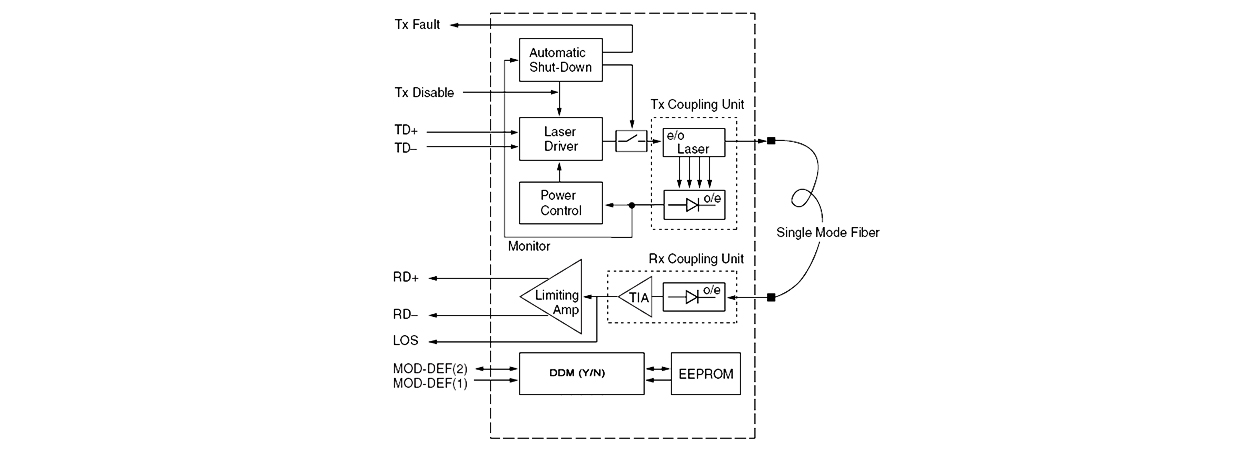
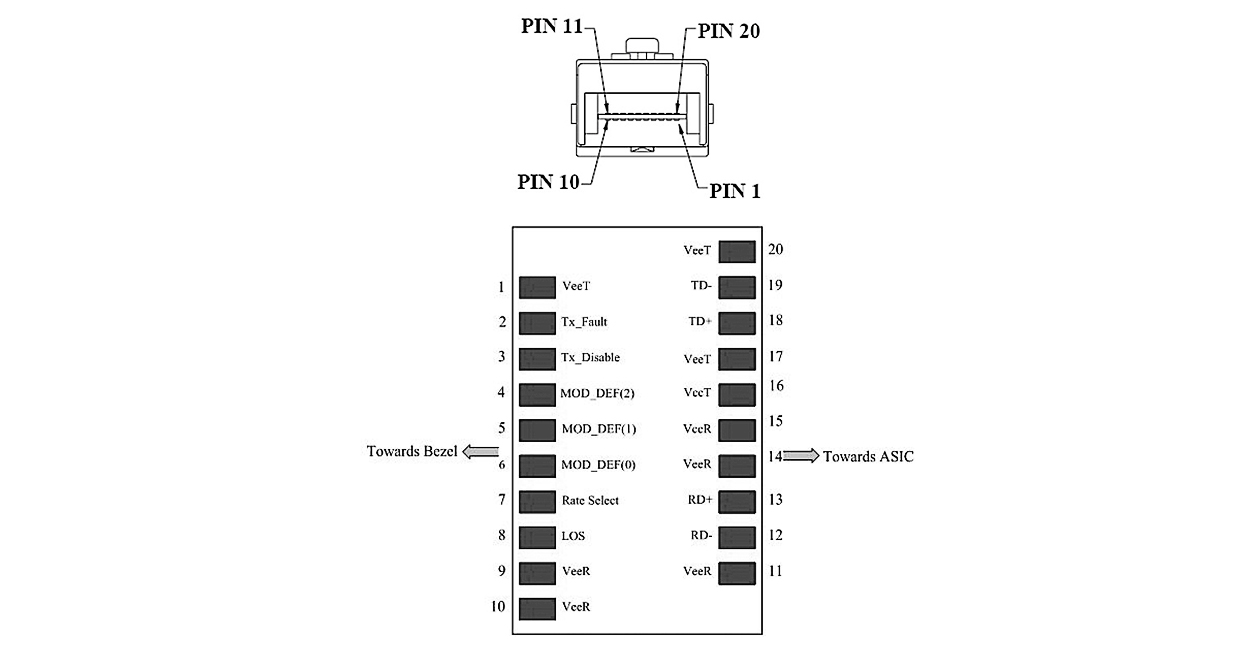
| Pin Num. | Name | Function | Plug Seq. | Notes | ||||
| 1 | VeeT | Transmitter Ground | 1 | 5) | ||||
| 2 | TX Fault | Transmitter Fault Indication |
3 | 1) | ||||
| 3 | TX Disable | Transmitter Disable | 3 | 2) Module disables on high or open | ||||
| 4 | MOD-DEF2 | Module Definition 2 | 3 | 3) 2 wire serial ID interface. | ||||
| 5 | MOD-DEF1 | Module Definition 1 | 3 | 3) 2 wire serial ID interface. | ||||
| 6 | MOD-DEF0 | Module Definition 0 | 3 | 3) Grounded within the module. |
||||
| 7 | Rate Select | Not Connect | 3 | Function not available | ||||
| 8 | LOS | Loss of Signal | 3 | 4) | ||||
| 9 | VeeR | Receiver Ground | 1 | 5) | ||||
| 10 | VeeR | Receiver Ground | 1 | 5) | ||||
| 1 1 | VeeR | Receiver Ground | 1 | 5) | ||||
| 12 | RD- | Inv. Received Data Out | 3 | 6) | ||||
| 13 | RD+ | Received Data Out | 3 | 6) | ||||
| 14 | VeeR | Receiver Ground | 1 | 5) | ||||
| 15 | VccR | Receiver Power | 2 | 7) 3.3 ± 5% | ||||
| 16 | VccT | Transmitter Power | 2 | 7) 3.3 ± 5% | ||||
| 17 | VeeT | Transmitter Ground | 1 | 5) | ||||
| 18 | TD+ | Transmit Data In | 3 | 8) | ||||
| 19 | TD- | Inv. Transmit Data In | 3 | 8) | ||||
| 20 | VeeT | Transmitter Ground | 1 | 5) | ||||
1) TX Fault is an open collector/drain output, which should be pulled up with a 4.7K – 10KΩ resistor on the host board. Pull up voltage between 2.0V and VccT, R+0.3V. When high, output indicates a laser fault of some kind. Low indicates normal operation. In the low state, the output will be pulled to < 0.8V.
2) TX disable is an input that is used to shut down the transmitter optical output. It is pulled up within the module with a 4.7 – 10 KΩ resistor. Its states are:
Low (0 – 0.8V): Transmitter on
(>0.8, < 2.0V): Undefined High
(2.0 – 3.465V): Transmitter Disabled
Open: Transmitter Disabled
3) Mod-Def 0,1,2. These are the module definition pins. They should be pulled up with a 4.7K–10KΩ resistor on the host board. The pull-up voltage shall be VccT or VccR.
Mod-Def 0 is grounded by the module to indicate that the module is present
Mod-Def 1 is the clock line of two wire serial interface for serial ID
Mod-Def 2 is the data line of two wire serial interface for serial ID
4) LOS (Loss of Signal) is an open collector/drain output, which should be pulled up with a 4.7K – 10KΩ resistor. Pull up voltage between 2.0V and VccT, R+0.3V. When high, this output indicates the received optical power is below the worst-case receiver sensitivity (as defined by the standard in use). Low indicates normal operation. In the low state, the output will be pulled to <0.8V.
5) VeeR and VeeT may be internally connected within the SFP module.
6) RD-/+: These are the differential receiver outputs. They are AC coupled 100Ω differential lines which should be terminated with 100Ω (differential) at the user SERDES. The AC coupling is done inside the module and is thus not required on the host board. The voltage swing on these lines will be between 400 and 2000mV differential (200 – 1000mV single ended) when properly terminated.
7) VccR and VccT are the receiver and transmitter power supplies. They are defined as 3.3V ±5% at the SFP connector pin. Maximum supply current is 300Ma. Recommended host board power supply filtering is shown below. Inductors with DC resistance of less than 1 ohm should be used in order to maintain the required voltage at the SFP input pin with 3.3V supply voltage. When the recommended supply-filtering network is used, hot plugging of the SFP transceiver module will result in an inrush current of no more than 30Ma greater than the steady state value. VccR and VccT may be internally connected within the SFP transceiver module.
8) TD-/+: These are the differential transmitter inputs. They are AC-coupled, differential lines with 100Ω differential termination inside the module. The AC coupling is done inside the module and is thus not required on the host board. The inputs will accept differential swings of 400 – 2000mV (200 – 1000mV single-ended).


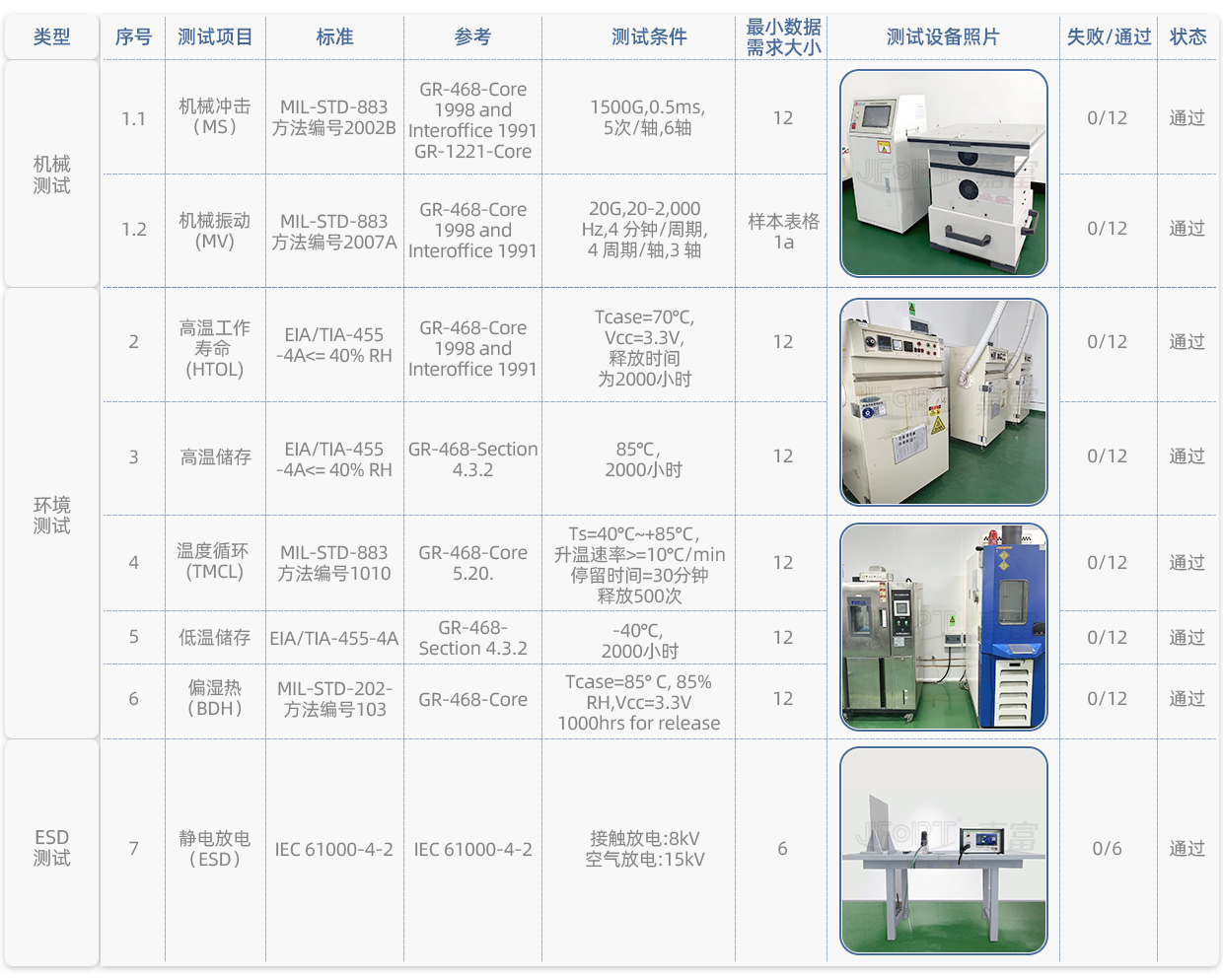










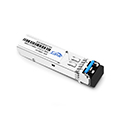
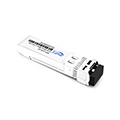
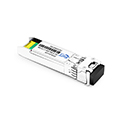
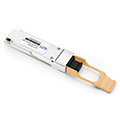
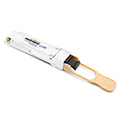
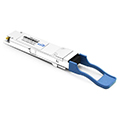
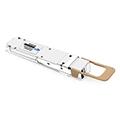


















































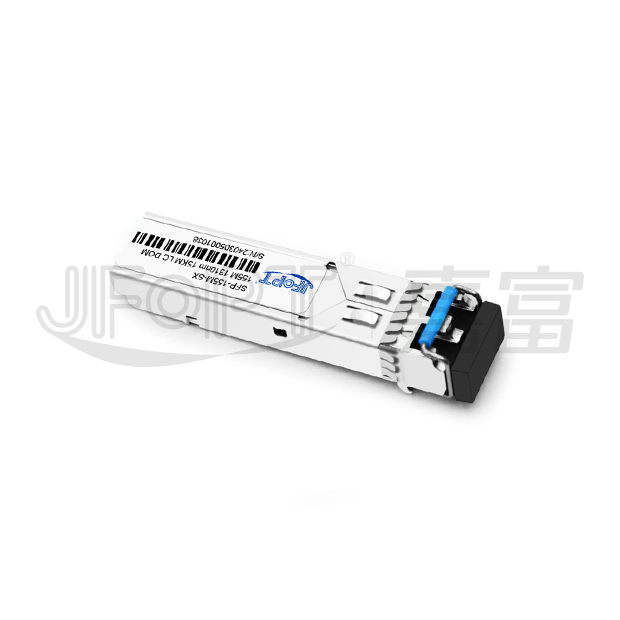










 Wendy
Wendy Sophie
Sophie Jeanne
Jeanne












